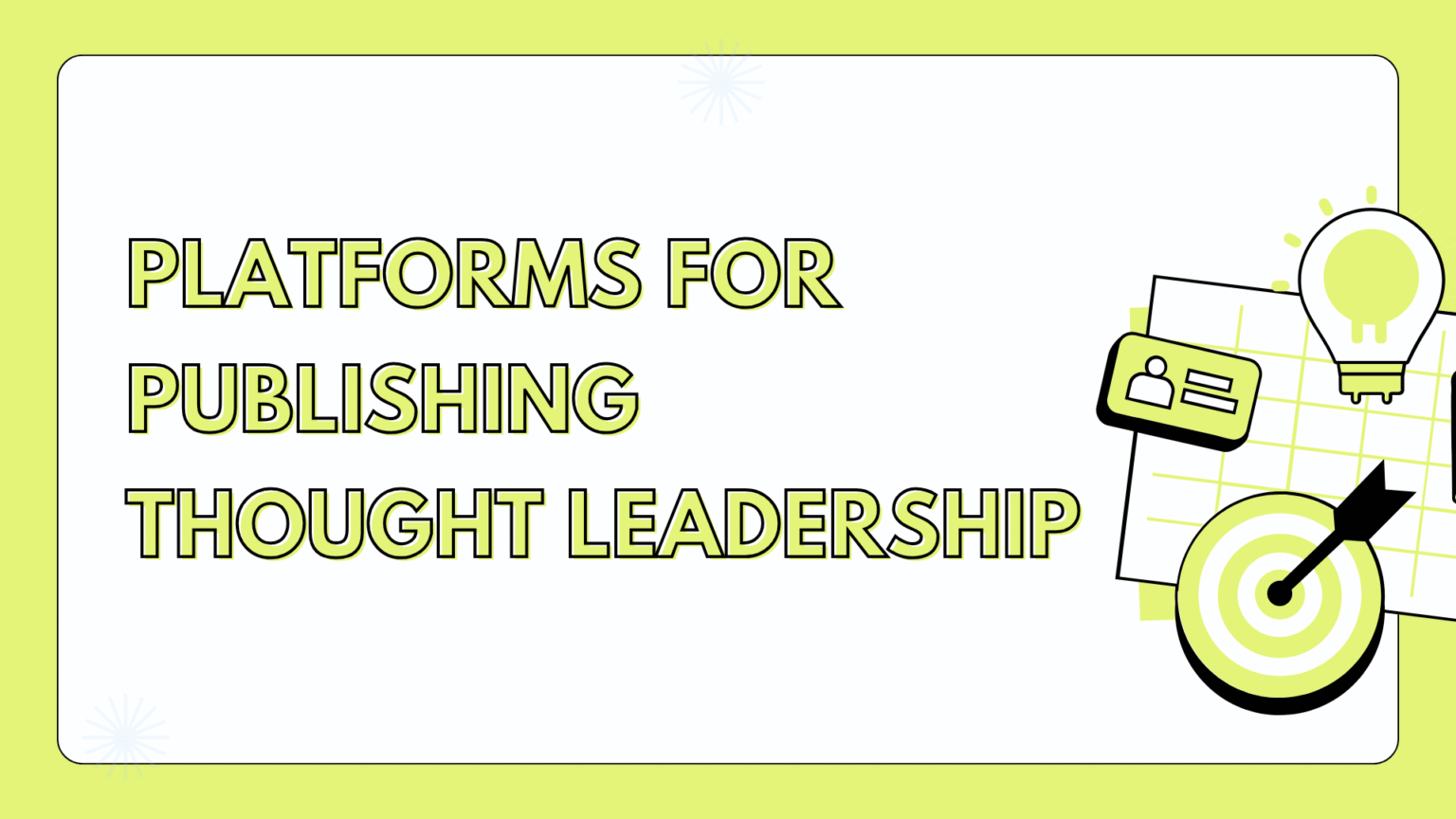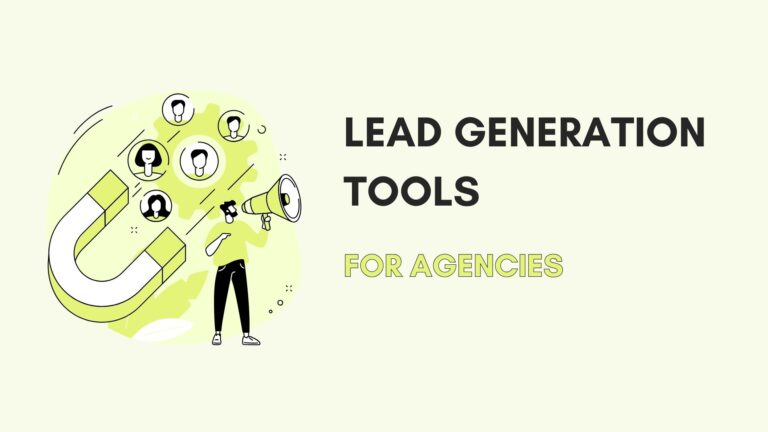Publishing thought leadership content is no longer simply about publishing ideas. It’s also about how to choose platforms that maximize your reach, credibility, and impact. The platforms you choose will dictate how successfully your insights connect with the right audience, whether you’re an expert, business leader, or new voice.
There are more opportunities today for thought leaders to distinguish themselves in the digital landscape, from professional networks to independent publishing platforms. This guide will cover the six best platforms for publishing thought leadership, and each will help you develop authority in your field.
What is thought leadership content?
Thought leadership content is a valuable and insightful resource created by content writers to help develop expertise and influence a particular area of industry. For content writers and social media professionals, creating thought leadership content involves sharing original insights, analysis, and practical knowledge with their audience.
On social media platforms, thought leadership fosters trust and engagement, establishing the social media person as a trusted authority on a subject or topic. Good thought leadership content attracts followers, fuels conversation, and ultimately builds meaningful connections and long-term relationships.
What Are the Key Thought Leadership Trends to Watch in 2025?
The year 2025 will have a variety of trends related to how thought leaders engage with communities, create value, and impact positive change. Understanding these trends will enable individuals and businesses to elevate their brand, and we will achieve this through sustainable, competitive differentiators in today’s challenging market.
Authenticity and transparency become must-haves
Audiences are demanding greater honesty in all forms of communication. The most effective thought leaders are those who take the time to share real stories and discuss their adversity and speed bumps, rather than just focusing on how they became successful. Transparency builds trust long-term and increases engagement with your community.
Leveraging AI and deep data analytics
48% of businesses are already utilizing some form of AI to leverage big data effectively. Using AI and big data analytics allows thought leaders to formulate highly personalized, accurate, and relevant content based on the needs of their target audiences. AI also assists in trend research in addition to automating and streamlining their content creation processes.
Focusing on deep expertise in niche sectors and building micro communities
Thought leaders will shift their focus from broadcasting broad information to getting their expertise known and then working to develop their niche communities (also referred to as micro-communities). Removing the clutter makes for better engagement and ultimately more profound influence with specific target groups.
Diversifying content forms with the benefits of multimedia
Live and recorded video, podcasts, interactive webinars, and visual-centric storytelling will be paramount in gaining newer followers or retaining existing ones. Making good use of multimedia content is highly effective in breaking apart complex messages and making them more digestible and engaging.
Purpose-driven leadership with a positive impact on society
Successful thought leaders will not only focus on their philanthropic endeavors and achieving their own or business growth, but also on fostering sustainable social values. Connecting content with social issues and community obligation creates powerful influence and contributes to the emotional equity of personal or corporate brands.
Best Platforms for Publishing Thought Leadership
1. Contently
Contently is a top-tier platform for content marketing, allowing organizations and thought leaders to create, manage, and distribute high-quality content all at scale. It pairs organizations with a vetted collective of proven freelance writers, journalists, designers, and content strategists, so all work is grounded in expertise and credibility.
Source: Contently
Contently also provides project management capabilities, allowing teams to collaborate end-to-end on content. Analytics and performance tracking capabilities help creators assess the impact of their work and redefine ways to create content that improves engagement and ROI.
For thought leaders seeking to create polished and impactful content for targeted audiences, Contently offers a great way to achieve this and more, while avoiding unnecessary operational and logistical burdens.
Perfect for those who wish to ensure the consistent quality of their articles, improve stature and authority, continue to contribute valuable insights and learning, and not be preoccupied by the mechanics of content creation.
Expert tip
Contently is often regarded as the gold-standard content marketing platform for enterprises, known for helping brands plan and produce top-notch content at scale.
Managing editor, The B2B Marketer
2. LinkedIn
LinkedIn is the primary social networking site specialized in business networking and professional relationships. The platform connects millions of people and organizations across numerous sectors of the global economy.
LinkedIn was created to allow people to establish their own personal brand and share thought leadership content that showcases their knowledge and expert opinion. LinkedIn’s emphasis on professional development differentiates it from other social media sites, allowing for meaningful, relevant discussions to happen and knowledge to be exchanged.
Source: Linkedin
Thought leaders can generate long-form articles, share posts, and engage with various targeted groups. This allows professionals to reach a relevant audience of peers, decision-makers, and potential clients. Creating relevant thought leadership content allows thought leaders to amplify their voice, build trust, and earn authority within their area of expertise.
Whether for individuals or businesses, consistently sharing valuable and genuine content on LinkedIn enables people and organizations to increase visibility, receive networking opportunities, and drive career growth.
3. Medium
Medium is an online publishing platform that offers individuals and organizations long-form publishing space to communicate and share stories and thought leadership pieces with a large and diverse audience.
As an online publisher, Medium is widely recognized as a clean, easy-to-read, and focused platform that emphasizes quality over social networking and engagement. It is an ideal location to write about deeper ideas and insights in long-form writing.
Source: Medium
For thought leaders, Medium can be a great avenue to reach readers outside of their immediate circle by connecting with Medium’s extensive community of engaged writers and readers.
Users can write more in-depth pieces discussing trends in their industry, personal experience, or new ideas as part of developing their industry expertise or authority. Medium’s algorithms also recommend relevant content to their most engaged audiences, which serves the potential for additional organic reach or engagement.
4. Substack
Substack is a platform for writers, experts, and thought leaders to publish newsletters by email to their audience. This content is delivered directly to users, unlike other social media or blogging sites.
Substack fosters a deliberate sense of connection between content creators and their subscribers, enabling them to cultivate a loyal community around their expertise and insights, thereby enhancing their reputation as thought leaders.
Source: Substack
For a thought leader, Substack allows them to own and control their audience while producing curated quality content regularly. Substack supports many content formats (for example, written articles, podcasts, exclusive recaps), which can all be monetized through a paid subscription system.
Substack enables content creators to own their audience and communicate directly, eliminating the need for algorithms and third-party channels and making them feel more trusted and accessible.
5. Ghost
Ghost is a contemporary open-source publishing platform that grants creators, bloggers, and thought leaders total control over the audience and content. Ghost is not a traditional blogging platform; it boasts open and straightforward features that can connect content management, SEO, and monetize on subscription in one location, utilizing a clean.
For thought leaders, Ghost publishing software combines flexibility and extensibility with reporting; it is a dedicated environment to publish articles, newsletters, multimedia, and more.
Ghost enables thought leaders to leverage their expertise by sharing exclusive content with paid subscribers, thereby realizing subscription monetization. This approach allows them to pursue for-profit ventures without relying on third-party sites and algorithms, while maintaining control and ownership of their brand and distribution.
Ghost also provides analytics and SEO capabilities to extend the reach of thought leaders’ publications. Suppose your organization or a prospective one plans to develop a sustainable and professional presence as thought leaders in authoritative domains for the long term.
6. Personal Blog / Website
A personal blog or website is one of the best and most flexible tools to build thought leadership. With a personal blog or website, you own and control your content, brand, and the audience experience, unlike third-party platforms. you aren’t subject to ever-changing algorithms or platform policies, which allows to to be consistent in your online presence.
For thought leaders, a personal blog or website serves as a home base for all content, including articles, case studies, videos, podcasts, and downloadable resources. A personal blog/website is also a reflection of who you are and your professional values, so most importantly, it also creates credibility and authority in your industry.
Conclusion
Thought leadership will rely on the quality of ideas, but it will also rely on which ideas are shared and how they are shared. The right platform can broaden reach, increase credibility, and create engagement with your audience, whether that is through professional networks, long-form publishing, direct subscriber relationships or totally owned channels.
Frequently Asked Questions




